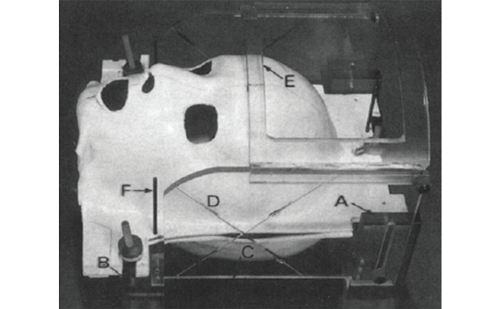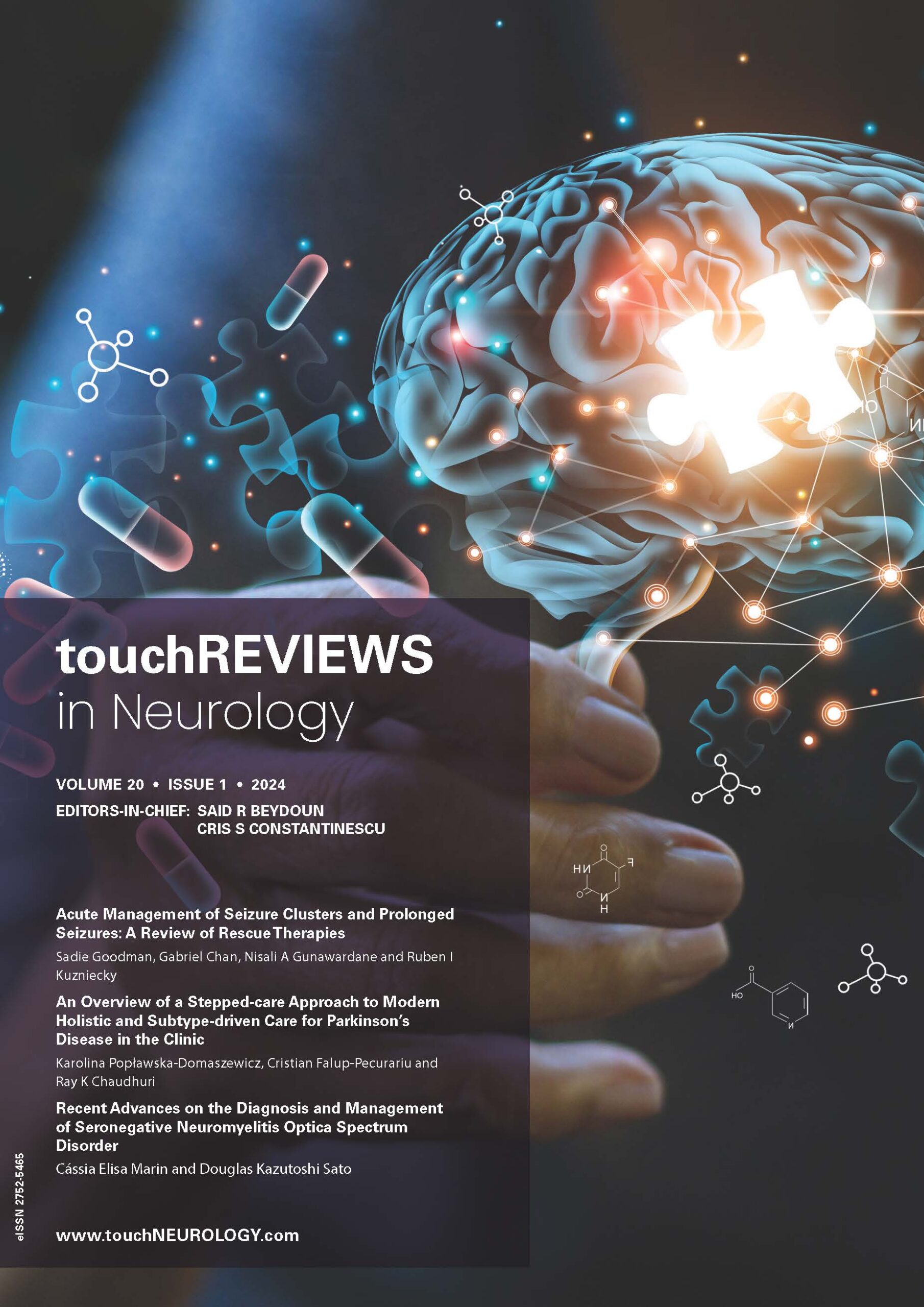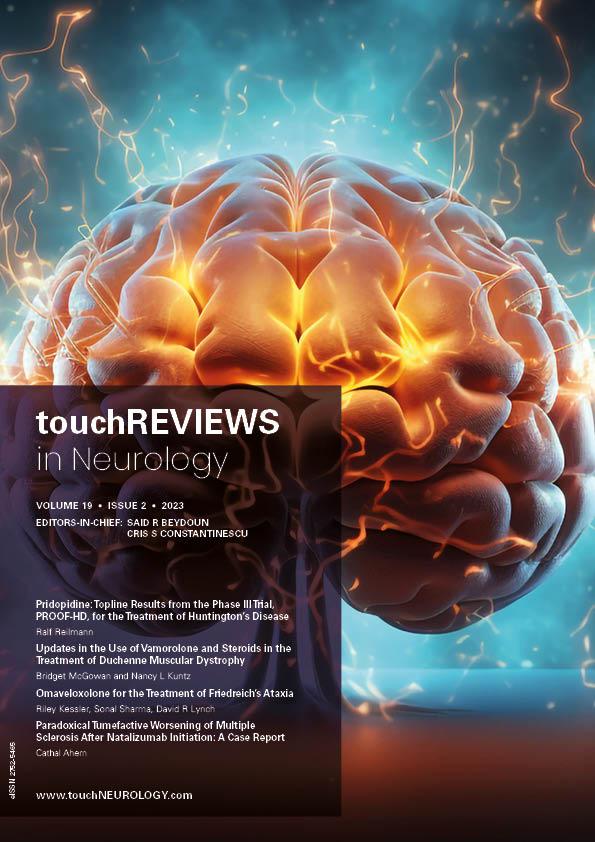US NEUROLOGY – VOLUME 7 ISSUE 2 – FALL 2011
We are very pleased to welcome you to the latest edition of US Neurology. We are confident you will find the selection of articles on offer in this issue to be an insightful, worthy addition to the existing literature and of immense use in your day-to-day-practice. As usual, the range of topics covered is broad […]
Editorial
Beginning with the publication of a paper by Paolo Zamboni in 20091 that claimed an association between a number of cerebral venous ‘abnormalities’ and multiple sclerosis (MS), the international MS community has been embroiled in a debate, unprecedented in scope and controversy. The original Zamboni paper defined ‘chronic cerebrospinal venous insufficiency’ (CCSVI) as the presence […]
Neurodegenerative Disease
This article examines the possible involvement of nutrients in the pathogenesis, prevention, or management of Alzheimer’s disease (AD). Nutrients are defined here as food constituents that are essential for preventing or treating the clinical syndromes that develop when they are deficient. In general, they act as substrates or co-factors for enzymes and thereby sustain growth […]
Parkinson’s disease (PD) is the second most common age-related neurodegenerative disorder, affecting 1−2 % of people aged more than 60 years.1 It is a complex disorder that affects the motor, cognitive, behavioral, and autonomic systems.2 PD can be hard to diagnose early because mild parkinsonian signs are often detected in elderly patients who are not […]
Parkinson’s disease (PD) is a clinical syndrome consisting of a variable combination of the four cardinal features of resting tremor, rigidity, bradykinesia, and postural instability.1 Akinesia, defined as inability to initiate movement (e.g. gait ignition failure) or sustain movement (e.g. sudden freezes), is considered by some to be the fifth cardinal feature of PD.2 Most […]
Parkinson’s disease (PD) is the second most common neurodegenerative disease affecting 1 % of the population above the age 65.1 The incidence of PD is expected to increase dramatically worldwide with increased life expectancy.2 PD is manifested by the combination of primary motor disability (bradykinesia, rigidity, tremor, and gait impairment) as well as a spectrum […]
Parkinson’s disease (PD) is the second most common neurodegenerative disease affecting 1 % of the population above the age 65.1 The incidence of PD is expected to increase dramatically worldwide with increased life expectancy.2 PD is manifested by the combination of primary motor disability (bradykinesia, rigidity, tremor, and gait impairment) as well as a spectrum […]
The degeneration of the dopaminergic nigrostriatal system and parkinsonism (rest tremor, rigidity, bradykinesia and postural instability/gait disorder) represent only one aspect of Parkinson’s disease (PD), a multifaceted and complex disorder.1 In addition to this typical motor dysfunction, non-motor symptoms (NMS) also significantly reduce of quality of life.2–4 Several non-motor features are associated with deficits in […]
Brain Trauma
The purpose of this article is twofold: first, to review the studies comparing carotid endarterectomy (CEA) with medical treatment to help decide who should undergo revascularization; and secondly, to review studies comparing carotid angioplasty and stenting (CAS) versus CEA to see how they should be revascularized. Extracranial internal carotid artery stenosis is a leading cause […]
Multiple Sclerosis
As a chronic disease of the central nervous system (CNS), multiple sclerosis (MS) is characterized by a complex interplay between inflammation, demyelination, remyelination, gliosis, and neuronal injury.1 it continues to be a major cause of acquired neurologic disability in young adults worldwide, particularly in people of northern european origin.2 it affects women with twice the […]
Multiple sclerosis (MS) is the most common inflammatory demyelinating disease of the central nervous system (CNS). Although it is generally considered to be an autoimmune disease, MS may be a heterogeneous condition incorporating different pathologies. The incidence of autoimmune comorbidities in MS patients may help us elucidate the autoimmune aspects of the disease. Furthermore, the […]
Headache
Migraine is one of the most prevalent neurological illnesses occurring in approximately 10 % of the US population, with a total prevalence of up to 29.6 % if probable migraine is also considered.1,2 The disorder manifests as episodic pain that is disabling in 50–75 % of patients with migraine.2 With nearly one in four households […]
Pain
Peripheral nerve stimulation (PNS) is a unique neuromodulation modality that is rapidly gaining popularity for a variety of clinical conditions. Despite its straightforward nature, the modality has been for a long time treated as a ‘stepchild’ of the neuromodulation field, yielding the spotlight to the more ubiquitous spinal cord stimulation (SCS) and the more elegant […]
Neuropathic pain may arise from a variety of causes involving either the central or peripheral nervous system, and is typically challenging to treat. The annual incidence of neuropathic pain is estimated to be 1 %, with the burden likely to increase as the population ages.1 When traditional mainstays of treatment fail to provide relief, more […]
What is Trigeminal Neuralgia? Trigeminal neuralgia (TN) is a vexing clinical problem for a number of reasons, not least of which is clearly defining its clinical spectrum. A commonly accepted definition of TN is that of a facial pain syndrome in which a patient experiences brief, episodic, and sharp attacks of pain in the distribution […]
Surgical Imaging
The goal of glioma surgery is to maximize tumor resection while preventing a new post-operative neurologic deficit. For both low- and high-grade gliomas, increased extent of resection correlates with improved progression-free survival as well as with overall survival.1–5 While some features of brain tumors can be visualized, in general, most aspects of infiltrative gliomas cannot […]
When neurosurgeons first attempted to treat epilepsy by means of surgery in the late 1800s, they were operating on ‘invisible’ lesions. Without any imaging or electrophysiological technology, MacEwen and Horsley operated under the principles of functional cerebral localisation developed largely by John Hughlings Jackson.1 Epilepsy surgery has come a long way, as now epileptologists and […]

Trending Topic
Intracranial radiosurgery, no matter the means or methods of administration, is predicated on a core set of principles, including head immobilization and precise delineation of the treatment target. For some five decades after Leksell introduced the concept of stereotactic radiosurgery in 1951,1 rigid head fixation via an invasive device was an integral component towards these ends. […]
Journal Archive
touchREVIEWS in Neurology is a peer-reviewed, free-to-access, bi-annual neurology journal comprising review articles, case reports, practice guides, theoretical discussions, and original research. It features balanced and comprehensive articles written by leading authorities, addressing the most important and salient developments in the field of neurology.
Latest articles videos and clinical updates - straight to your inbox
Log into your Touch Account
Earn and track your CME credits on the go, save articles for later, and follow the latest congress coverage.
Register now for FREE Access
Register for free to hear about the latest expert-led education, peer-reviewed articles, conference highlights, and innovative CME activities.
Sign up with an Email
Or use a Social Account.
This Functionality is for
Members Only
Explore the latest in medical education and stay current in your field. Create a free account to track your learning.







